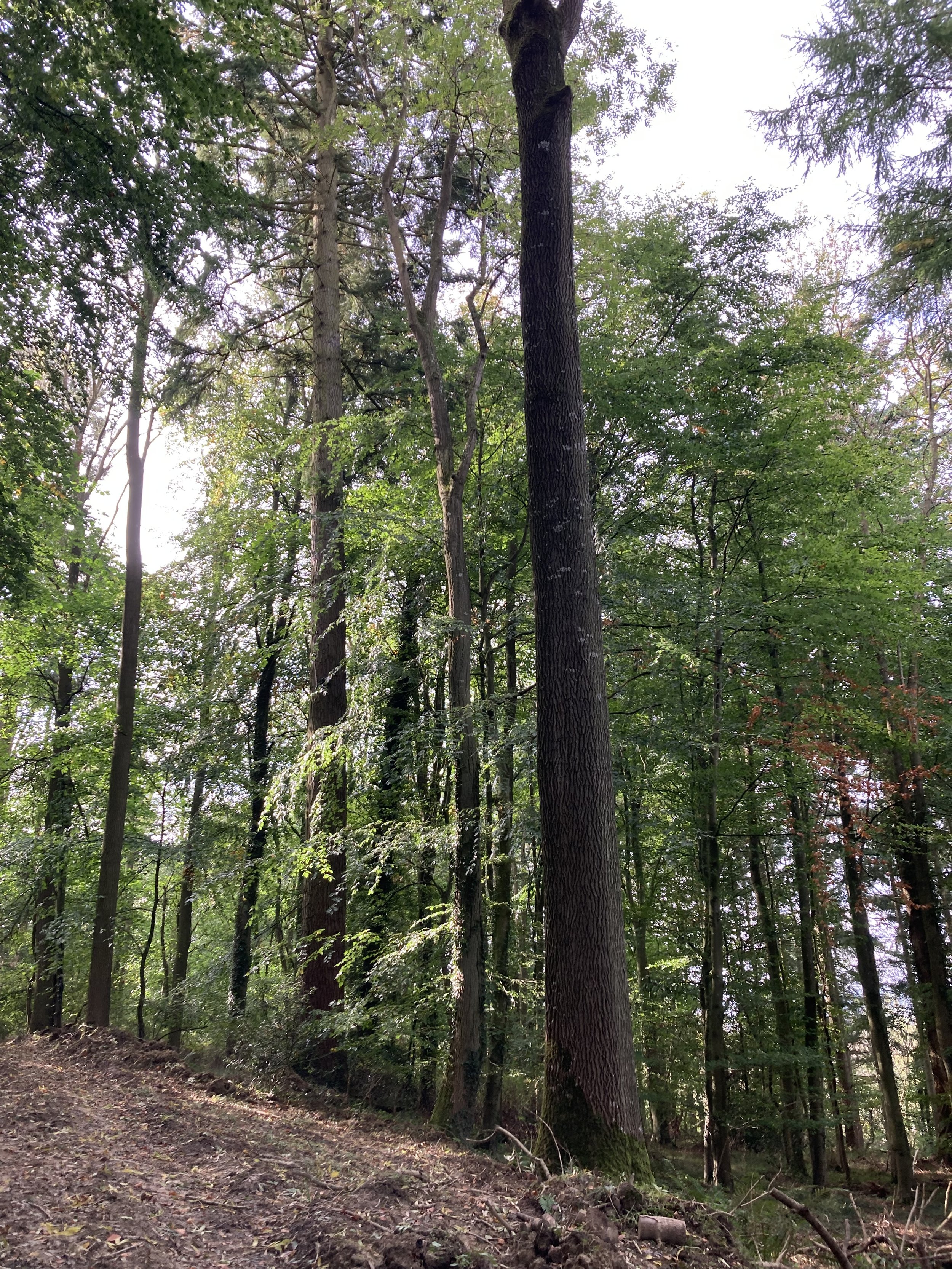I am fortunate that in my day job assessing and providing consultancy regarding woodlands across England and Wales, I meet some fascinating people and see all types of trees and woodlands. Sometimes, a particular tree, or group of trees, will stand out - perhaps it’s a gnarled yew or a tree of particularly fine form.
Image by Hugh Williams
This ash tree, set in a woodland in Herefordshire, took my breath away. With a diameter at breast height of >80cm, a defect-free stem, and a height to the first branch of c.15m, this tree had c.10m3 of timber in the trunk alone. It is a magnificent specimen. The sight of this ash tree was even more uplifting given the poor condition of much of the ash trees in the UK, as ash dieback continues to run its course. Indeed, most of the ash trees within the same wood were infected.
The future of ash in the UK is not optimistic. The much hoped-for “natural resilience” of ash against ash dieback is proving elusive. Mass screening trials of disease-resistant, or tolerant, provenances of ash have shown that death rates of the saplings are very high, with losses exceeding 99% in a Forest Research field-based experiment. Work is ongoing, by taking grafts and growing on from the few symptom-free plants. (source: Ash dieback (Hymenoscyphus fraxineus) - Forest Research
So, rather than wait and risk this tree succumbing to disease, why not fell it and convert it into products where the beauty of ash can be seen and treasured? And yes, the landowner receives income for the timber, and local mills and craftsmen and women could use the materials to fashion highly desired products.
Ash furniture, 'pedestal table and curved bench' created by @made_by_bill
This is not without its challenges. For whilst obtaining the necessary felling licences is a straightforward process, the economics of woodland management require that an area of trees, not a single tree, is required to be thinned/felled before the costs balance, and then turn to be positive – income! Speaking with those at the sharp end of felling and transporting, this can be as low as 100tonnes, c.4 lorry loads. Fortunately, this tree is in a wood where other trees could be thinned and or felled in order to make a load. Even better news is that the market for low-grade materials - not this tree - has resulted in firewood being prized - hence adding to the income for managing woods.
In a wider perspective, using our own domestic woodland resource, rather than being reliant on imported timber, is clearly desired. GB imports c.80% of its timber requirements and burns, either as logs or as wood chip, over 80% of the hardwoods that are felled. Surely, this tree, and many others, should have an end use that is more reflective of its quality.
The use of British timber not only provides local employment – which is particularly important in rural areas, but we can also be assured that this wood is sustainably managed after the felling, due to the UK’s has a highly regulated approach to woodland management – for example, replanting conditions would certainly apply.
Another consideration is that locally sourced wood also has a lower carbon footprint than imported timber– which, from an economic and environmental perspective, is important and increasingly essential.
To have this tree converted into ash floorboards or furniture would be a fitting use of this tree. There will be many other trees in our woodlands that could be equally prized- so it's time, perhaps, to have a look at our woods and find the quality. Having seen the timber at Whitney Sawmills, we know there is the expertise and demand for trees of this type, and they will be treated with the respect and appreciation they deserve.
Author: Hugh Williams, Senior Associate Director at John Clegg and Co and a Director of Whitney Sawmills.
Authored: 26/01/2024
Last updated 08/02/2024




